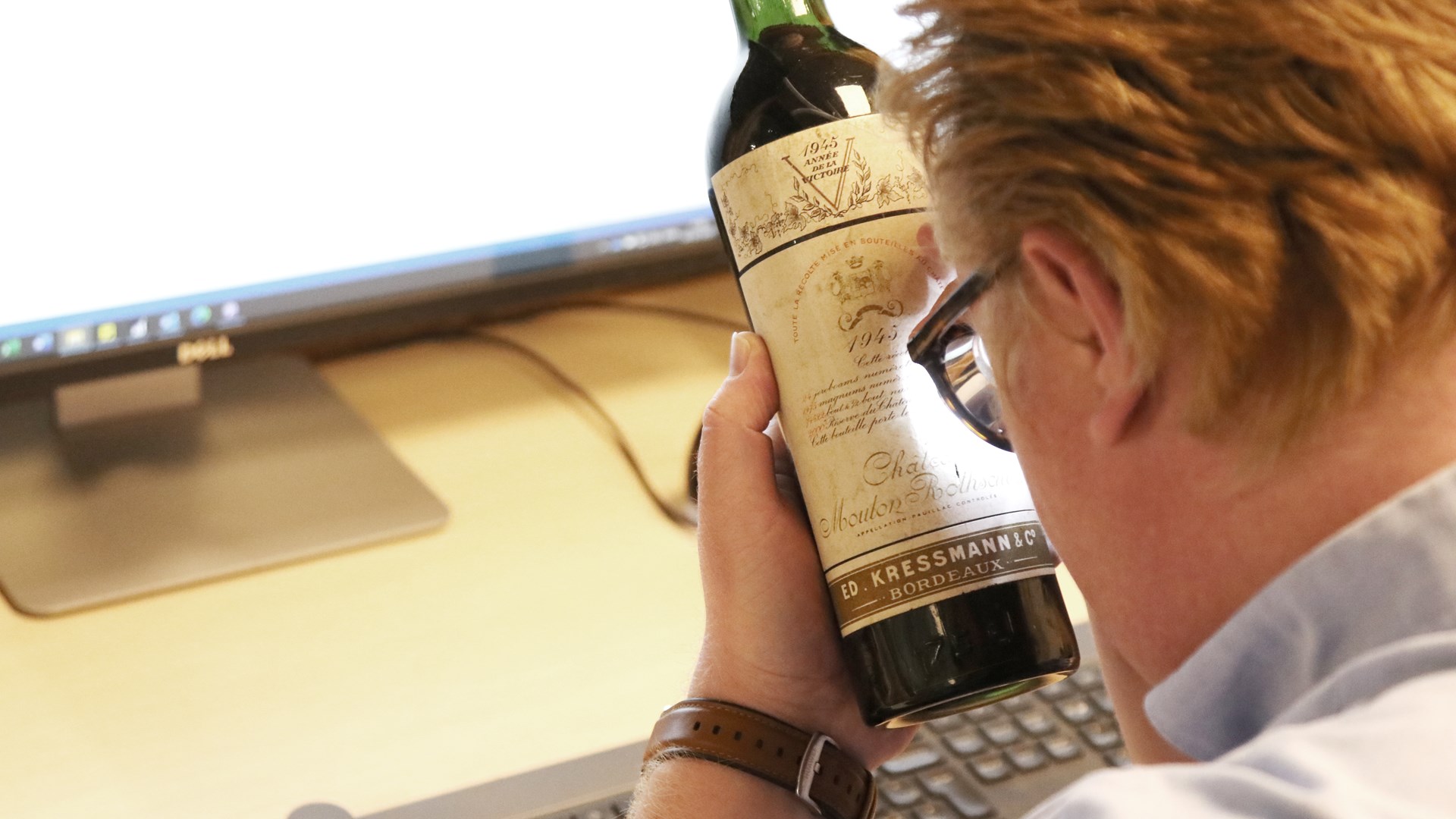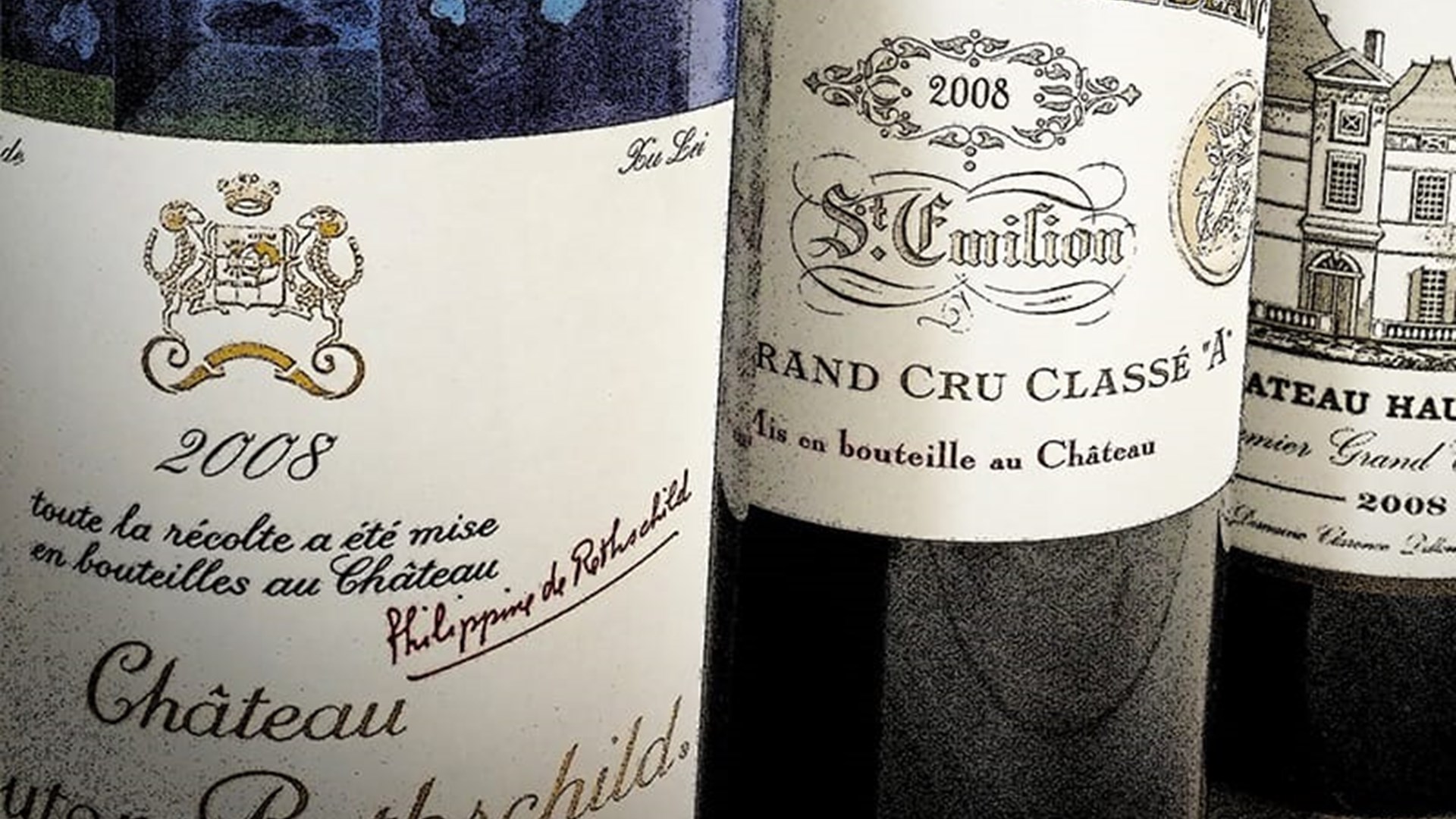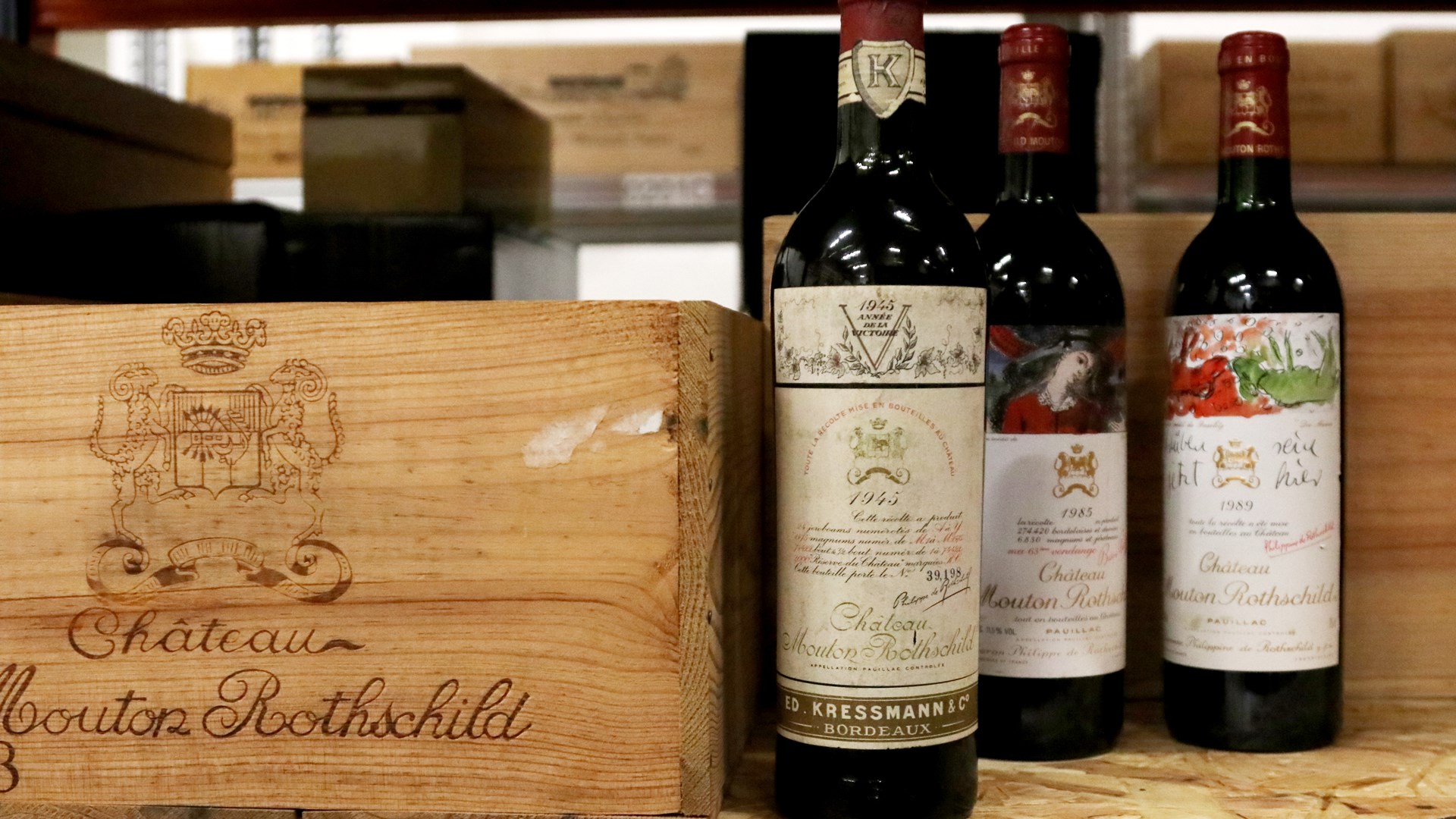Article - RareWine Academy
Magical Bordeaux - The Ultimate Wine Guide
In Bordeaux, grape varieties are making world-class wines with a lot of diversity. Learn more about Bordeaux's appellations and styles in this complete guide.
A Guide to Bordeaux
Bordeaux is one of the world's most important wine regions. The diversity is great, which is why all types of wines are produced here. Everything is controlled in a noble French way and the possibilities of the area seem almost endless.
Due to the wide range of possibilities, Bordeaux can also be a complex entity to understand. If you understand Bordeaux, then you will have a fantastic basic understanding of many of the world's other wine regions. Bordeaux is home to some of the world's greatest wines made from the most famous grape varieties. In particular, Cabernet Sauvignon and Merlot provide great reference points that many other winemakers are inspired by.
Bordeaux is a very large area, which this article seeks to provide an overview of. Read on and let yourself be drawn into French wine finesse.
Location And Climate In Bordeaux
Bordeaux is located in western France, where the great Gironde estuary flows into the Atlantic Ocean. The climate is moderate and is strongly influenced by the rivers that flow through the region and by the Atlantic Ocean itself. The region is relatively flat compared to other prominent wine regions, so there is no significant influence from high altitude vineyards or very steep slopes.
Wine-wise, Bordeaux is considered to have a moderate climate, with an average temperature of just over 20 degrees during the growing season. This creates good opportunities for the best-known grapes in the area. The soil also provides room for development in the individual sub-areas of the region, and producers take advantage of this with their choice of grape varieties, which are optimised for the soil.
However, it is important to understand that the weather does not always follow the average, so it is important to look closely at the weather in the year in question. Indeed, it is the weather that contributes to the great variations in quality between the different vintages in Bordeaux.
Furthermore, blending grapes is one of the key points to understand wines from Bordeaux. For both white and red wines, several different grape varieties are blended to achieve the right balance in the final wine. Understanding what each grape variety can add to the wine, as well as where it is best grown, is key to the success of each producer.
Bordeaux in numbers
120,000 hectares of vineyards
>60 appellations
>8.500 producers / chateaux
>9.000 wines each year
Approx. 900 million bottles each year
Around 1.5% of world production, 15% of France
< 3% sold for more than 15 euros per bottle
10% of vineyards will be organic by 2020
Overview: styles of wine in Bordeaux
Most wine styles are represented in Bordeaux. Like so many other places, however, it is the great red wines that most consumers know the area for. Overview of styles in Bordeaux:
Sparkling: Even sparkling wine is produced in Bordeaux with the appellation 'Cremant de Bordeaux'. These are generally light wines with a hint of aromatic character from Sauvignon Blanc, which is the main grape in these.
White wine: These are produced in two different styles. The light and elegant style, without barrel ageing, and ready to drink at a young age. Most often they come from either 'Entre-deux-Mers' or the wider appellation 'Bordeaux'.
Barrel-aged versions are also produced with complexity that develops further with long ageing. The best examples come from the appellations south of Bordeaux city with Pessac-Léognan, as the leader. In recent years, several of the best red wine producers have begun producing fine white wines - from Margaux to Saint-Emilion.
Sweet wines: from the appellation 'Sauternes', located about 30 km south of Bordeaux city, you will find the sweet wines. It has a unique microclimate that allows the fungus botrytis cinera to develop optimally on the grapes. This produces some of the world's most complex sweet wines. In addition to Sauternes, sweet wines also come from the surrounding appellations, of which 'Barsac' is the most well-known.
Red wine: the majority of wine production in Bordeaux is red wine with almost 90% of all wine produced, of which two main styles dominate. One offers light fresh red wines that can be drunk at a young age. The second style is the one that has given the region its great fame - powerful red wines with great potential for development. The last style is represented by 'Pomerol' and 'Pauillac', among others.
The new style: Even modern styles like orange wine, uncontrolled natural wine and other experiments can be found around all areas of this tradition-bound region.

Grape varieties in Bordeaux
A wide range of grape varieties are used in Bordeaux. All grapes are forerunners for winemaking in many countries, but it is in Bordeaux that the benchmarks are produced. Reference points refer to wines that in taste and style are the type of wine that many other wine regions try to recreate. In Bordeaux, however, the grape variety will rarely be mentioned on the label, as the producer's style will be based on the blend of that year.
In Bordeaux there will very rarely be wines made from only one grape variety. Traditionally, producers have several grape varieties planted in the vineyards. This has allowed the winemaker to adapt to the development of the season, as not all grapes ripen at the same time. The grape varieties mentioned here will not all ripen optimally in all vintages. The grape variety that ripens best in that year will often be the dominant one in that year's wine.
For Red Wine From Bordeaux The Following Blue Grape Varieties Are Used:
Merlot is the most planted blue grape variety for the production of red wines from Bordeaux. Merlot accounts for 66% of the blue grapes. It is planted throughout the region, but enjoys optimal conditions in Pomerol in particular, where a cult wine such as Petrus is made 100% from Merlot without the addition of other grapes. The grape is known to give plenty of colour, as well as soft ripe tannins.
Cabernet Sauvignon is the second most planted blue grape variety with 22.5% of the blue grapes. Cabernet Sauvignon is the backbone of many of the best wines from the region with areas like Pauillac and Margaux being some of the most famous. The eponymous Château Latour from Pauillac is made from more than 90% Cabernet Sauvignon and is one of the world's best examples of what the grape is capable of.
However, it is extremely rare that wines are made exclusively from Cabernet Sauvignon. Often, they are blended with Merlot to round out the harsh tannins and high acidity.
Cabernet Franc occupies 9.5% of the planted vineyards in Bordeaux. The grape is even more rarely seen on its own but is mainly used to blend with the two grapes mentioned above.
Cabernet franc often gives green notes, as well as notes of herbs and dry tannins. These attributes are great in blends, where they give edge to the wine - on its own, however, it does not have the same punch. The most popular blend is with Merlot, where the result is a perfectly balanced wine. For example, Château Cheval Blanc from Saint-Emilion is known for its high proportion of Cabernet Franc, which gives a unique character to Cheval Blanc.
Petit Verdot, Carmenere, Malbec and others make up the remaining two percent of the vineyards. Most of these grapes should be considered as spices, used in small quantities in Bordeaux to give some edge and character to the wines.
New grape varieties have been allowed in Bordeaux in recent years to see how other grapes fare in the region against rising temperatures. However, these grapes are only allowed in wines with a Bordeaux appellation, in the wines of a few communes, so it will probably be many years before touriga nacional becomes a major grape in the most famous districts of Bordeaux.
For White Wine From Bordeaux The Following Green Grape Varieties Are Used:
Semillon is the most planted and represents 45% of the total green grape vineyards. It is the dominant grape for the sweet wines of Sauternes and surrounding communes. The grape is easily attacked by the fungus botrytis cinera, which helps to create the unforgettable wines of Sauternes. In the rest of the region, it is used to blend with the other green grapes. Semillon contributes particularly floral notes to the wines.
Sauvignon Blanc is the second most planted green grape with 43% of the green grapes in Bordeaux. It gives high acidity and a distinctive style with notes of freshly cut grass, elderflower and minerality. This is the backbone of many of the great dry wines of Bordeaux - particularly from the Pessac-Léognan appellation.
Muscadelle, at 5%, is an important player with its very perfumed character. It is used mainly in the sweet wines and less in the dry versions. However, the grape has nothing to do with the sweet Muscat grape known from elsewhere in France.
The last vineyards are divided between several small grape varieties, which are mainly used locally. None of these plantations have a major influence on the wines produced in the area, which is why they do not even appear in the official facts for the area.

Division Between Right And Left Bank Of The Gironde Estuary
The Bordeaux region is divided into more than 50 different appellations. An appellation is a defined area with clear rules for planting, production and more. An appellation can cover one commune or in some cases several communes. In general, the appellation 'Bordeaux' covers the whole region, while an appellation such as 'Pomerol' covers only that particular commune.
The general division in Bordeaux is between the right and left bank of the Gironde estuary. The division is used widely and gives a reasonable overview of the area.
Left Bank
The left (western) bank is the side of the Gironde estuary where the city of Bordeaux itself is located. The wine districts included in this breakdown are Medoc and sub-municipalities to the north of the city, and Graves and sub-municipalities to the south of the city.
On the left, the soil is high in clay, which generally provides good conditions for the Cabernet Sauvignon grape. Overall, it can be said that the red wines from here have the greatest storage potential. This is because the choice of grape variety, combined with the soil conditions, gives higher structural elements to the wines.
The most famous municipalities on the left bank are from north to south:
- Saint-Estéphe
- Pauillac
- Saint-Julien
- Margaux
- Pessac-Léognan
- Graves
Right Bank
The right (east) bank of the Gironde estuary is larger and more diverse, with the most famous appellations located around the city of Libourne. The soil is more calcareous here, which is a very suitable soil type for the Merlot grape. The combinations of grape selection, as well as soil, make the wines from the right bank softer and with more rounded tannins. These wines are generally ready to drink earlier, but the best ones can have very high storage potential.
The two appellations leading the way for Right Bank are:
- Pomerol
- Saint-Emilion

The 5 Main Appellations Of Bordeaux
Good wines are produced in many places in the Bordeaux region, but five communes stand out when it comes to wines with great development potential. The five communes that produce the most interesting wines - both from a taste and investment point of view - are these:
Pauillac
Pauillac is for many the best-known appellation in Bordeaux. This is because three of the five 1st Grand Cru Classé châteaux are located in this appellation. Château Latour, Château Lafite-Rothschild and Château Mouton-Rothschild are the three leading châteaux in the commune out of the almost 100 châteaux registered in the appellation. In total, the appellation covers 1213 hectares and 7.2 million bottles of Pauillac are produced annually. Pauillac is located about 50 km north of Bordeaux city on the left bank of the Gironde estuary.
In terms of taste, the wines from Pauillac are known for being rank and their high intensity of flavour when they are younger than 15 years. With time, notes of pencil-point and wet soil develop.
Margaux
The Margaux appellation is located about 25 km. north of Bordeaux city and is named after the famous Château Margaux, which is classified as 1st Grand Cru Classé.
The appellation extends over three communes and a total of 1500 hectares. In total, 9 million bottles are produced per year with Margaux on the label.
Margaux counts 21 Grand Cru Classé châteaux, 10 Cru Bourgeois and four Cru artisan châteaux. In terms of taste, the wines of Margaux are known for their finesse and elegance, which with age give notes of fungus and tobacco.
Pomerol
Pomerol is a small and almost perfect appellation on the right bank. Pomerol accounts for only 0.7% of the total area of Bordeaux. About 800 hectares are planted here. In the whole appellation there are 138 chateaux producing Pomerol. Because the appellation is so relatively small, the producers have always insisted that there should be no classification. Each producer makes its wine in its own chateau.
The high demand combined with the minimal area results in high prices for the wines of Pomerol. Over the years, the high quality of the wines in the appellation has ensured a high price level and high profits, which have been invested back into the chateaux - thus ensuring the consistently high quality.
The most famous châteaux in Pomerol are Petrus, Lafleur and Le Pin, all of which produce wine in small quantities and are at the top of the price range for the whole Bordeaux region.
Saint-Emilion.
Saint-Emilion is the most picture-perfect of all the appellations in the Bordeaux region. It stretches around the village of the same name, and the town has even been protected as a UNESCO World Heritage Site since 1999. 5,400 hectares of vineyards stretch around the appellation - some are on the slopes around the town and the rest stretch eastwards, where they adjoin the Pomerol appellation.
The latest classification from 2012 has 82 châteaux ranked, with four châteaux at the top. Château Cheval-Blanc, Château Ausone, Château Pavie and Château Angelus. The wines of Saint-Emilion are made primarily from Merlot, which produces soft and rounded wines with good balance.
Sauternes
Sauternes is located 30 km south of Bordeaux city and it is an appellation that covers sweet wines made from green grapes. The appellation covers 1557 hectares plus another 390 hectares in Barsac, which belongs to the same appellation. The wines are made from grapes that have been conveniently attacked by the fungus botrytis cinera. The fungus dehydrates the grapes so that the sugar level becomes extraordinarily high. This gives wines with unique character and great sweetness. These wines have been famous for hundreds of years and they are unique in the world wine market. Château d'Yquem is at the top here, followed by many other excellent châteaux.
The Complete Understanding Of Bordeaux
Bordeaux is an area with so many facets that a complete painting can hardly be expressed in words. Existing legislation and classifications, however, dictate the framework and help to understand the complexity of mountainous Bordeaux.
The greatness and diversity of Bordeaux is only understood in depth when feet are planted in the French soil between vines and vineyards. The above has outlined a Bordeaux with infinite possibilities for winemaking in all its forms. The complexity is massive. Bordeaux must be tasted, felt, and sensed before any kind of overview can be formed. This article has framed the narrative. Visit Bordeaux and complete the picture.
